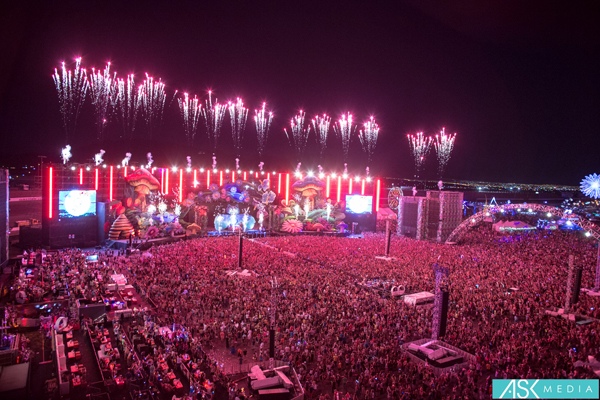Electronic music has been around for quite some time, but more recently in the past few years it has seemingly taken off. What is causing this meteoric rise in popularity/trend of electronic dance music (often referred to as “EDM”), and why now? Although I dislike using that term to refer to the fans and listeners (myself included), I will be using it for ease in this post.
As with many industries and technologies, much of the growth and exposure can in part be attributed due to the advent of the internet and social media. Eventbrite, “the leading online ticketing and registration platform popular for electronic dance music (EDM) events, released their new EDM Fan Social Media Listening Study at SXSW 2014″ and it found that social media and the “live experience” were key drivers in the new-found popularity. The study found that EDM fans tweeted 11 times a day versus 1.85 times a day compared to the average twitter user and that EDM fans are “visual consumers”, meaning that fans of this large-encompassing-genre are much more engaged, and more likely to be engaged as well. With the introduction of the “Our Story” feature on Snapchat, fans are given yet another avenue to share their love for the music and the lifestyle. What is unique about this is that Our Story allows for a collaborative live-stream, giving fans who aren’t present to share the experience in real time. YouTube also offers live-stream of events so that fans who are not able to go to events are able to join in on the experience, to an extent, from behind a screen.

134000 fans gather per day over 3 days for the Electronic Daisy Carnival (EDC) 2014.
Source: http://askmediaproductions.com/wp-content/uploads/2013/07/EDC-Vegas-ASK-Media-Productions-86.jpg
However, social media doesn’t just benefit the listeners. DJ’s now can also share their tracks and sets online now, helping them to generate a presence nationwide or worldwide much quicker than in the past. Without outlets such as YouTube and SoundCloud, artists are able to release full songs or demos for the world to hear, helping them to promote their album. This is further backed up by “the highest paid DJ on the Forbes list, Tiesto, who brought in a whopping $22 million last year, [and] attributes the much of electronic music’s growth to social media.” More now than ever before, the DJs and producers are able to take advantage of the EDM culture/lifestyle and social media to boost their fan base; a relatively unknown artists could go from a hopeful, regular Joe posting on Youtube/Facebook/SoundCloud/Twitter and reach international fame within a year or two, maybe even less. Such was the case for DJs/Producers Martin Garrix and Aiden Judge.
In an effort to keep to this brief – it is the combination of social media and the behaviours and attitudes of the EDM fan produce a synergistic effect that drove and continue to drive the ever-growing scene of electronic dance music.
To read more in depth about this:
The Economics of Electronic Dance Music Festivals
The study released by Eventbrite
Press release by Eventbrite about the study
Further thoughts: With the EDM industry, lifestyle, and genre expanding and commercializing at such a fast pace, is there a bubble?